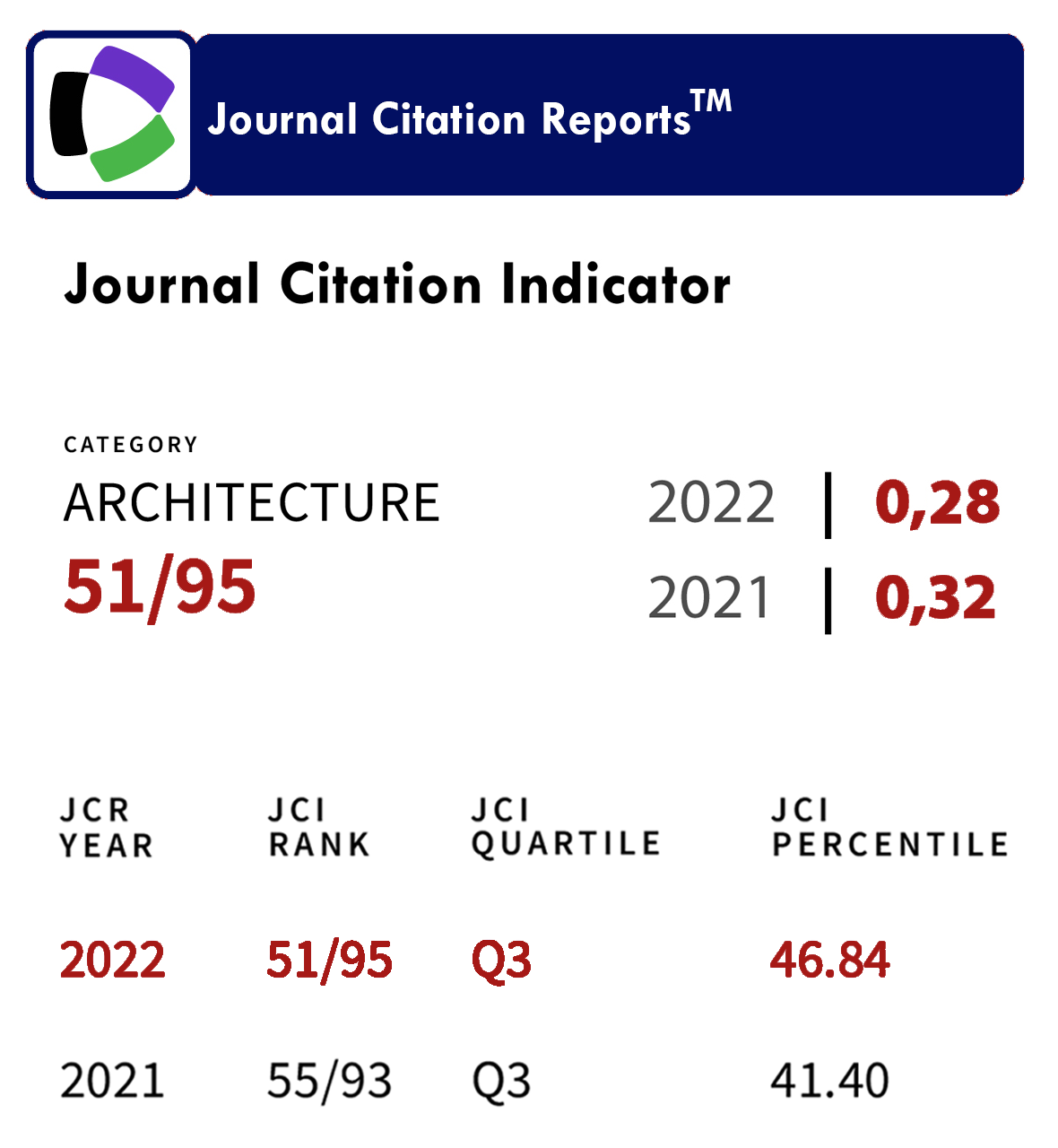Semiotics and deconstruction in architecture: a note on language and inhabitation
DOI:
https://doi.org/10.18537/est.v006.n010.10Keywords:
Arquitectura, deconstrucción, habitación, lenguaje, SemióticaAbstract
This brief essay runs on the current, dominant at the time and now somewhat restful, which, under the heading of deconstruction, have responded recent works of architecture, some emblematic. It is argued, first, how the deconstructive option puts in crisis semiotics hypothesis that establishes the signifier-signified binomial. And it is found, then how an architectural reading that takes the idea of deconstruction literally and embodied it in the image of the building, is no more than a naive anticipation of what, if anything, will end up happening in everyday life. The conclusion is that the inhabitant deconstructs the living space from immemorial time, naturally and spontaneously, as he takes possession of it.
Keywords: Architecture, deconstruction, inhabitation, language, Semiotics.
Downloads
References
Calvino, I. (2009). Las ciudades invisibles. Madrid: Siruela.
Choisy, A. (1971). Vitruve. París: F. de Nobele.
Deleuze, G. (1989). El pliegue, Leibniz y el barroco. Barcelona: Paidós.
Deleuze, G. & Foucault, M. (2005). Theatrum Philosophicum. Repetición y diferencia. Barcelona: Anagrama.
Deleuze, G. & Guattari, F. (2013). Rizoma. Valencia: Pre-Textos.
Derrida, J. (2001). La verdad en pintura. Buenos Aires: Paidós.
Eco, U. (1973). Segno. Milano: ISEDI.
García Hípola, M. (2008). Peter Eisenman: herramientas gráficas y estrategias proyectuales. De lo analítico a lo operativo, de lo manual a lo maquínico. En Enrique Rabasa Díaz (Ed.), Actas del XII Congreso Internacional de Expresión Gráfica Arquitectónica (pp. 363-371). Madrid: UPM, ETSAM.
Leibniz, G. W. (1986). Monadología. Madrid: Alhambra.
Llorens, Tomás. (Ed.). (1974). Arquitectura, Historia y Teoría de los signos. El Symposium de Castelldefels. Barcelona: La Gaya Ciencia.
Mallarmé, S. (1993). Poésies. París: Bookking International.
Passaro, A. M. (2005). La dispersión. Concepto, sintaxis y narrativa en la arquitectura de finales del siglo XX. (Tesis Doctoral). Barcelona: UPC. Recuperado de http://hdl.handle.net/10803/6085
Platón. (1974). Obras completas. Madrid: Aguilar.
Saussure, F. (1973). Cours de linguistique général. París: Payot.
Scott Brown, D. & Venturi, R. (1971). Aprendiendo de todas las cosas. Barcelona: Cuadernos ínfimos.
Wittgenstein, L. (1988). Investigaciones filosóficas. Barcelona: UNAM Crítica.
Published
How to Cite
Issue
Section
License
The Journal declines any responsibility for possible conflicts derived from the authorship of the works that are published in it.
The University of Cuenca in Ecuador conserves the patrimonial rights (copyright) of the published works and will favor the reuse of the same ones, these can be: copy, use, diffuse, transmit and expose publicly.
Unless otherwise indicated, all contents of the electronic edition are distributed under a Creative Commons Attribution-NonCommercial-ShareAlike 4.0 International License.






